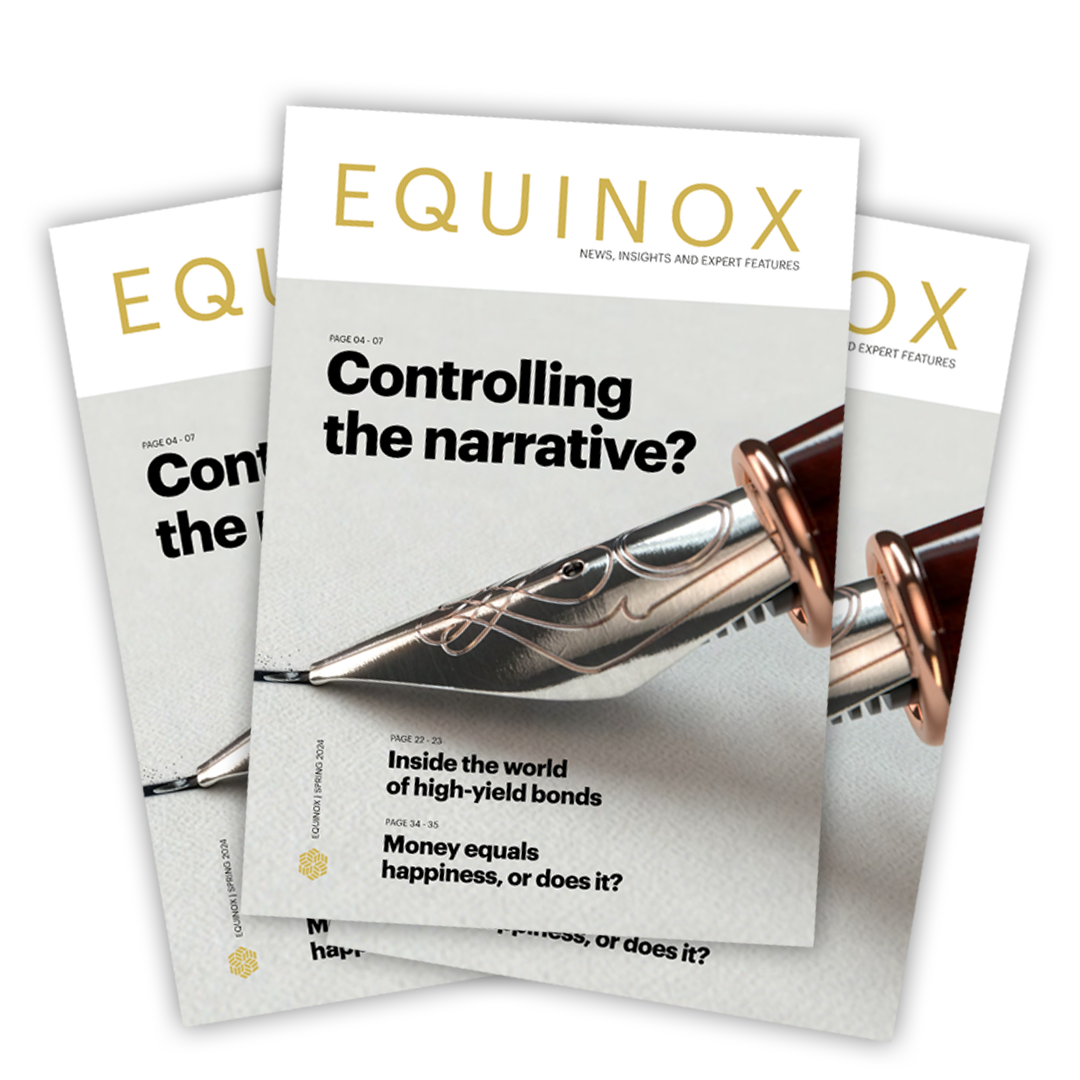A recurring debate in the investment world is whether it’s better to opt for actively managed investment funds, or passive index trackers.
An actively managed fund will try to outperform the market, with a fund manager selecting the stocks that he or she thinks will increase in price by more than the index.
Meanwhile, an index tracking fund will simply try to provide broad market returns by trying to match a particular index as closely as possible. For example, a UK equity tracking fund might try to provide returns in line with the FTSE 100.
In this blog we’ll consider the features, along with the pros and cons of each style and explain how we use them both in our portfolios.
How is an index constructed?
Before looking at the two different types of funds, it is worth reminding ourselves what is involved in constructing an index, such as the FTSE 100.
Most stock market indices are ‘market cap weighted’. This essentially means the position of the company in the index is determined by the size of the company.
For example, the FTSE 100 invests in the largest 100 companies listed on the London Stock Exchange. It puts the most money into the largest company, the second largest amount into the second largest company and so on. The S&P 500 in the US works in a similar way, as do most other mainstream indices around the world.
An index tracking fund will aim to provide a return in line with the index by buying the same proportion in each stock as the index holds. The theory is that investing in this way represents the ‘average return’ of the market as a whole.
By comparison some investors in active funds may do better than the market, some will do worse, therefore, the average active fund should return roughly the same as the index – minus costs.
Control the controllables
It is often said that the only thing we can control in investing is what we pay for it.
We can’t control what our returns will be. We can position our portfolio for a particular economic environment, if for example, we expect strong economic growth. However, we might be wrong and instead, there’s a recession.
Even if a manager gets an economic call correct, the individual companies he/she selects might turn out to have stock specific issues that weren’t anticipated.
We can control risk to a somewhat greater extent, by diversifying across different stocks or asset classes, although even here we can be caught out if historic relationships between assets are not repeated.
By contrast, we have a great deal of control over costs, which we generally know in advance. By paying less for a particular fund, we increase our chances of providing a positive return.
Costs are where index trackers have an advantage. If a UK index tracking fund charges 0.1% p.a. management fee, provided it tracks the index efficiently we know our return is likely to be in the region of 0.1% below the index.
If we instead pay an actively managed fund manager (say) 0.75% p.a., then he/she would need to outperform the index by 0.75% p.a. just to keep up with the index. Or, put another way, the fund needs to outperform by 0.65% just to return the same as a tracker which charges 0.1%.
Actively managed funds also have other hidden costs. Because they tend to trade more than the index fund (buying and selling underlying holdings), they will be hit more by dealing costs such as broker commissions or stamp duty.
What does the market know?
Passive fund advocates will say that the market is pretty efficient.
Certainly, in mainstream markets like the UK or US, there are tight regulations around company information. Market-sensitive information must be released publicly so that all investors have access to it at the same time therefore all known information about a company is already factored into the stock price.
If new information is released, it would be difficult for an active manager to react to it quicker than anyone else. This is particularly true in today’s world where algorithms make trading decisions in microseconds.
However, actively managed funds may do better from an ‘informational’ advantage in the case of smaller companies where they might only be analysed by a smaller number of investors. This may also be true in certain markets, such as those in emerging markets, which might be less efficient.
Investing styles
There has been much academic research over the years as to whether there are particular types of stocks which tend to outperform over time.
There have been all sorts of factors which have been identified, such as momentum (buying previous winners), value (buying ‘cheap’ stocks) or growth (buying stocks where profits are growing faster than average).
There are many ways you can increase your chances of outperformance, but to do so, you essentially need to take more risk than the average.
For example, over the long-term, smaller companies tend to outperform larger ones. If a £1bn company adds £1bn of value it will double in size, but a £100bn company adding £1bn of value has only added 1%. This is one of the flaws in market cap weighted indices, which hold the most in the largest companies.
Of course, there is also greater risk that a smaller company might fail and so they are riskier by nature.
Actively managed funds tend to follow one or two of these investing styles. These styles tend to go in and out of favour, which is why active fund managers rarely outperform in every single market environment.
Equilibrium’s approach
We are generally agnostic as to whether we invest actively or passively. It will depend on the particular environment we are in, and the market we are considering.
We have typically used index tracking funds for our US exposure, and actively managed funds for smaller companies and emerging markets. For other asset classes, we have often used a combination.
We will always try to keep a balance of different investing styles to keep risk down. However, where we have conviction that we will see an economic recovery (for example), we might tilt slightly more towards small or value stocks. By contrast, during the pandemic we put more money into stocks we thought would benefit from the ‘working from home’ dynamic.
We tend to use actively managed funds for these tilts and select those managers whose style we think is right for that environment. This approach needs constant monitoring and changing between managers and styles at appropriate times. For this reason, we would always tell self-investors to go for a passive approach, which requires less monitoring or detailed research.
Our approach is to consider value for money, rather than pure cost. We will always try to keep costs down and can often negotiate substantial discounts on fund management charges. However, we will also happily pay more for a superior fund where we believe the manager is worth the extra cost.
There is a ‘hybrid’ type of funds – often called “smart BETA” – where the fund will try and tilt towards a particular style in a systematic way. For example, if we had an equal weighted S&P 500 fund, it would put more money in the smaller stocks and less in the larger stocks than a market cap weighted tracker. These tend to be more expensive than simple trackers but cheaper than truly active funds.
Finally, we are also a bit more wary of bond index trackers than equity ones. Like equity indices, these tend to be ‘market cap’ weighted. However, in bonds this doesn’t necessarily mean putting the most money in the largest or strongest companies.
In fact, what it often means for corporate bond trackers, is putting the most money in the company which has issued the most debt. To us, that’s not a very sensible strategy for managing risk.
Diversification is key
Historically, a lot of passive investors will diversify their portfolio by holding perhaps 60% in equities and 40% in bonds.
We think this is too simplistic. Whilst in recent times equities and bonds have often moved in different directions, this has not always been the case.
If we are in an environment where interest rates are going up rather than down (as has been the case in recently), we think certain types of equites and bonds could struggle at the same time.
This article from January 2021 sets out our concerns What’s the worst thing that could happen to 60:40 portfolios
We prefer to hold lots of other asset classes like property, infrastructure, and alternatives, all of which can only really be managed actively.
This blog is intended as an informative piece and does not construe advice. If you have any further questions, please don’t hesitate to get in touch with us using the form below or by reaching out to your usual Equilibrium contact.



